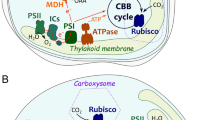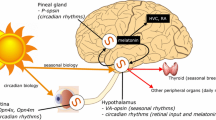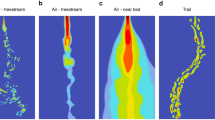Abstract
Two types of vertebrate cryptochromes (Crys) are currently recognized. Type 2 Crys function in the molecular circadian clock as light-independent transcriptional repressors. Type 4 Crys are a newly discovered group with unknown function, although they are flavoproteins, and therefore, may function as photoreceptors. It has been postulated that Crys function in light-dependent magnetoreception, which is thought to contribute towards homing and migratory behaviors. Here we have cloned and annotated the full-length pigeon ClCry1, ClCry2, and ClCry4 genes, and characterized the full-length proteins and several site-directed mutants to investigate the roles of these proteins. ClCry1 and ClCry2 are phylogenetically grouped as Type 2 Crys and thus are expected to be core components of the pigeon circadian clock. Interestingly, we find that ClCry4 is properly annotated as a Type 4 Cry. It appears that many birds possess a Type 4 Cry which, as in pigeon, is misannotated. Like the Type 2 Crys, ClCry4 is widespread in pigeon tissues. However, unlike the Type 2 Crys, ClCry4 is cytosolic, and purified ClCry4 possesses FAD cofactor, which confers characteristic UV–Vis spectra as well as two photochemical activities. We find that ClCry4 undergoes light-dependent conformational change, which is a property of insect Type 1 Crys involved in the insect-specific pathway of photoentrainment of the biological clock. ClCry4 can also be photochemically reduced by a mechanism common to all FAD-containing Cry family members, and this mechanism is postulated to be influenced by the geomagnetic field. Thus pigeon Crys control circadian behavior and may also have photosensory function.





Similar content being viewed by others
References
Sancar A (2003) Structure and function of DNA photolyase and cryptochrome blue-light photoreceptors. Chem Rev 103(6):2203–2237
Wang J, Du X, Pan W, Wang X, Wu W (2015) Photoactivation of the cryptochrome/photolyase superfamily. J Photochem Photobiol C-Photochem Rev 22:84–102
Cashmore AR (2003) Cryptochromes: enabling plants and animals to determine circadian time. Cell 114(5):537–543. https://doi.org/10.1016/j.cell.2003.08.004
Hore PJ, Mouritsen H (2016) The radical-pair mechanism of magnetoreception. Annu Rev Biophys 45(1):299–344
Sancar A (2016) Mechanisms of DNA repair by photolyase and excision nuclease (nobel lecture). Angew Chem Int Ed 55(30):8502–8527
Chaves I, Pokorny R, Byrdin M, Hoang N, Ritz T, Brettel K, Essen L-O, van der Horst GT, Batschauer A, Ahmad M (2011) The cryptochromes: blue light photoreceptors in plants and animals. Annu Rev Plant Biol 62:335–364
Lin C, Todo T (2005) The cryptochromes. Genome Biol 6:220
Kutta RJ, Archipowa N, Johannissen LO, Jones AR, Scrutton NS (2017) Vertebrate cryptochromes are vestigial flavoproteins. Sci Rep 7:44906
Yuan Q, Metterville D, Briscoe AD, Reppert SM (2007) Insect cryptochromes: gene duplication and loss define diverse ways to construct insect circadian clocks. Mol Biol Evol 24(4):948–955
van der Horst GT, Muijtjens M, Kobayashi K, Takano R, Kanno S, Takao M, de Wit J, Verkerk A, Eker AP, van Leenen D, Buijs R, Bootsma D, Hoeijmakers JH, Yasui A (1999) Mammalian Cry1 and Cry2 are essential for maintenance of circadian rhythms. Nature 398(6728):627–630
Kume K, Zylka MJ, Sriram S, Shearman LP, Weaver DR, Jin X, Maywood ES, Hastings MH, Reppert SM (1999) mCRY1 and mCRY2 are essential components of the negative limb of the circadian clock feedback loop. Cell 98:193–205
Zhu H, Yuan Q, Froy O, Casselman A, Reppert SM (2005) The two CRYs of the butterfly. Curr Biol 15:R953–R954
Song SH, Ozturk N, Denaro TR, Arat NO, Kao YT, Zhu H, Zhong D, Reppert SM, Sancar A (2007) Formation and function of flavin anion radical in cryptochrome 1 blue-light photoreceptor of monarch butterfly. J Biol Chem 282(24):17608–17612
Öztürk N, Song S-H, Selby CP, Sancar A (2008) Animal type 1 cryptochromes: analysis of the redox state of the flavin cofactor by site-directed mutagenesis. J Biol Chem 283:3256–3263
Koh K, Zheng X, Sehgal A (2006) JETLAG resets the Drosophila circadian clock by promoting light-induced Degradation of TIMELESS. Science 312:1809–1812
Ceriani MF, Darlington TK, Staknis D, Mas P, Petti AA, Weitz CJ, Kay SA (1999) Light-dependent sequestration of TIMELESS by CRYPTOCHROME. Science 285:553–556
Rutila JE, Suri V, Le M, So WV, Rosbash M, Hall JC (1998) CYCLE is a second bHLH-PAS clock protein essential for circadian rhythmicity and transcription of Drosophila period and timeless. Cell 93(5):805–814
Darlington TK, Wager-Smith K, Ceriani MF, Staknis D, Gekakis N, Steeves TD, Weitz CJ, Takahashi JS, Kay SA (1998) Closing the circadian loop: CLOCK-induced transcription of its own inhibitors per and tim. Science 280(5369):1599–1603
Öztürk N, Selby CP, Song S-H, Ye R, Tan C, Kao Y-T, Zhong D, Sancar A (2009) Comparative photochemistry of animal type 1 and type 4 cryptochromes. Biochemistry 48:8585–8593
Mitsui H, Maeda T, Yamaguchi C, Tsuji Y, Watari R, Kubo Y, Okano K, Okano T (2015) Overexpression in yeast, photocycle, and in vitro structural change of an avian putative magnetoreceptor cryptochrome4. Biochemistry 54(10):1908–1917
Günther A, Einwich A, Sjulstok E, Feederle R, Bolte P, Koch K-W, Solov’yov IA, Mouritsen H (2018) Double-cone localization and seasonal expression pattern suggest a role in magnetoreception for European robin cryptochrome 4. Curr Biol 28(2):211.e214–223
Ishikawa T, Hirayama J, Kobayashi Y, Todo T (2002) Zebrafish CRY represses transcription mediated by CLOCK-BMAL heterodimer without inhibiting its binding to DNA. Genes Cells 7(10):1073–1086
Takeuchi T, Kubo Y, Okano K, Okano T (2014) Identification and characterization of cryptochrome4 in the ovary of western clawed frog Xenopus tropicalis. Zool Sci 31(3):152–159
Kubo Y, Takeuchi T, Okano K, Okano T (2010) Cryptochrome genes are highly expressed in the ovary of the African clawed frog Xenopus tropicalis. PLoS One 5(2):e9273
Kubo Y, Akiyama M, Fukada Y, Okano T (2006) Molecular cloning, mRNA expression, and immunocytochemical localization of a putative blue-light photoreceptor CRY4 in the chicken pineal gland. J Neurochem 97(4):1155–1165
Kobayashi Y, Ishikawa T, Hirayama J, Daiyasu H, Kanai S, Toh H, Fukuda I, Tsujimura T, Terada N, Kamei Y, Yuba S, Iwai S, Todo T (2000) Molecular analysis of zebrafish photolyase/cryptochrome family: two types of cryptochromes present in zebrafish. Genes Cells 5(9):725–738
Ozturk N, Selby CP, Annayev Y, Zhong D, Sancar A (2011) Reaction mechanism of Drosophila cryptochrome. Proc Natl Acad Sci USA 108:516–521
Park H-W, Kim S-T, Sancar A, Deisenhofer J (1995) Crystal structure of DNA photolyase from Escherichia coli. Science 268:1866–1872
Zoltowski BD, Vaidya AT, Top D, Widom J, Young MW, Crane BR (2011) Structure of full-length Drosophila cryptochrome. Nature 480:396–399
Schulten K, Swenberg CE, Weller A (1978) A biomagnetic sensory mechanism based on magnetic field modulated coherent electron spin motion. Zeitschrift fur Physkalische Chemie Neue Folge 111:1–5
Ritz T, Adem S, Schulten K (2000) A model for photoreceptor-based magnetoreception in birds. Biophys J 78:707–718
Maeda K, Robinson AJ, Henbest KB, Hogben HJ, Biskup T, Ahmad M, Schleicher E, Weber S, Timmel CR, Hore PJ (2012) Magnetically sensitive light-induced reactions in cryptochrome are consistent with its proposed role as a magnetoreceptor. Proc Natl Acad Sci USA 109:4774–4779
Wiltschko W, Wiltschko R (2007) Magnetoreception in birds: two receptors for two different tasks. J Ornithol 148(Suppl 1):S61–S76
Mouritsen H (2018) Long-distance navigation and magnetoreception in migratory animals. Nature 558(7708):50–59
Bailey MJ, Chong NW, Xiong J, Cassone VM (2002) Chickens’ Cry2: molecular analysis of an avian cryptochrome in retinal and pineal photoreceptors. FEBS Lett 513(2–3):169–174
Wiltschko R, Stapput K, Thalau P, Wiltschko W (2010) Directional orientation of birds by the magnetic field under different light conditions. J R Soc Interface 7(Suppl 2):S163–S177
Keeton WT (1971) Magnets interfere with pigeon homing. Proc Natl Acad Sci USA 68(1):102–106
Wiltschko R, Nohr D, Wiltschko W (1981) Pigeons with a deficient sun compass use the magnetic compass. Science (New York, NY) 214(4518):343–345
Dennis TE, Rayner MJ, Walker MM (2007) Evidence that pigeons orient to geomagnetic intensity during homing. Proc R Soc B Biol Sci 274(1614):1153–1158
Liedvogel M, Mouritsen H (2010) Cryptochromes—a potential magnetoreceptor: what do we know and what do we want to know? J R Soc Interface 7:S147–S162
Emery P, So WV, Kaneko M, Hall JC, Rosbash M (1998) CRY, a Drosophila clock and light-regulated cryptochrome, is a major contributor to circadian rhythm resetting and photosensitivity. Cell 95(5):669–679
Gegear RJ, Casselman A, Waddell S, Reppert SM (2008) Cryptochrome mediates light-dependent magnetosensitivity in Drosophila. Nature 454(21):1014–1019
Yamamoto K, Okano T, Fukada Y (2001) Chicken pineal Cry genes: light-dependent up-regulation of cCry1 and cCry2 transcripts. Neurosci Lett 313(1–2):13–16
Fu Z, Inaba M, Noguchi T, Kato H (2002) Molecular cloning and circadian regulation of cryptochrome genes in Japanese quail (Coturnix coturnix japonica). J Biol Rhythms 17(1):14–27
Pinzon-Rodriguez A, Bensch S, Muheim R (2018) Expression patterns of cryptochrome genes in avian retina suggest involvement of Cry4 in light-dependent magnetoreception. J R Soc Interface. https://doi.org/10.1098/rsif.2018.0058.
Okamura H, Miyake S, Sumi Y, Yamaguchi S, Yasui A, Muijtjens M, Hoeijmakers JH, van der Horst GT (1999) Photic induction of mPer1 and mPer2 in Cry-deficient mice lacking a biological clock. Science 286(5449):2531–2534
Iuvone PM, Tosini G, Pozdeyev N, Haque R, Klein DC, Chaurasia SS (2005) Circadian clocks, clock networks, arylalkylamine N-acetyltransferase, and melatonin in the retina. Prog Retin Eye Res 24(4):433–456
Zhu H, Conte F, Green CB (2003) Nuclear localization and transcriptional repression are confined to separable domains in the circadian protein CRYPTOCHROME. Curr Biol 13(18):1653–1658
Liu B, Liu H, Zhong D, Lin C (2010) Searching for a photocycle of the cryptochrome photoreceptors. Curr Opin Plant Biol 13:578–586
Macheroux P (1999) UV-visible spectroscopy as a tool to study flavoproteins. Methods Mol Biol (Clifton, NJ) 131:1–7
Partch CL, Clarkson MW, Ozgur S, Lee AL, Sancar A (2005) Role of structural plasticity in signal transduction by the cryptochrome blue-light photoreceptor. Biochemistry 44(10):3795–3805
Griffin EA, Staknis D, Weitz CJ (1999) Light-independent role of CRY1 and CRY2 in the mammalian circadian clock. Science 286:768–771
Ye R, Selby CP, Chiou YY, Ozkan-Dagliyan I, Gaddameedhi S, Sancar A (2014) Dual modes of CLOCK:BMAL1 inhibition mediated by Cryptochrome and period proteins in the mammalian circadian clock. Genes Dev 28(18):1989–1998
Vitaterna MH, Selby CP, Todo T, Niwa H, Thompson C, Fruechte EM, Hitomi K, Thresher RJ, Ishikawa T, Miyazaki J, Takahashi JS, Sancar A (1999) Differential regulation of mammalian period genes and circadian rhythmicity by cryptochromes 1 and 2. Proc Natl Acad Sci USA 96:12114–12119
Mouritsen H, Janssen-Bienhold U, Liedvogel M, Feenders G, Stalleicken J, Dirks P, Weiler R (2004) Cryptochromes and neuronal-activity markers colocalize in the retina of migratory birds during magnetic orientation. Proc Natl Acad Sci USA 101(39):14294–14299
Watari R, Yamaguchi C, Zemba W, Kubo Y, Okano K, Okano T (2012) Light-dependent structural change of chicken retinal Cryptochrome4. J Biol Chem 287(51):42634–42641
Berndt A, Kottke T, Breitkreuz H, Dvorsky R, Hennig S, Alexander M, Wolf E (2007) A novel photoreaction mechanism for the circadian blue light photoreceptor Drosophila cryptochrome. J Biol Chem 282(17):13011–13021
Kao YT, Tan C, Song SH, Ozturk N, Li J, Wang L, Sancar A, Zhong D (2008) Ultrafast dynamics and anionic active states of the flavin cofactor in cryptochrome and photolyase. J Am Chem Soc 130(24):7695–7701
Lin C, Robertson DE, Ahmad M, Raibekas AA, Jorns MS, Dutton PL, Cashmore AR (1995) Association of flavin adenine dinucleotide with the Arabidopsis blue light receptor CRY1. Science 269(5226):968–970
Ozturk N, Selby CP, Zhong D, Sancar A (2014) Mechanism of photosignaling by Drosophila cryptochrome: role of the redox status of the flavin chromophore. J Biol Chem 289(8):4634–4642
Provencio I, Warthen DM (2012) Melanopsin, the photopigment of intrinsically photosensitive retinal ganglion cells. Wiley Interdiscip Rev Membr Transp Signal 1(2):228–237
Busza A, Emery-Le M, Rosbash M, Emery P (2004) Roles of the two Drosophila CRYPTOCHROME structural domains in circadian photoreception. Science 304(5676):1503–1506
Rosato E, Codd V, Mazzotta G, Piccin A, Zordan M, Costa R, Kyriacou CP (2001) Light-dependent interaction between Drosophila CRY and the clock protein PER mediated by the carboxy terminus of CRY. Curr Biol 11:909–917
Funding
This work is supported by the National Natural Science Foundation of China (Grant no. 21403298) and the China Specialized Research Fund for the Doctoral Program of Higher Education (Grant no. 20134307120015) to Jing Wang. This work was also supported by NIH Grants GM118102 and ES027255 to Aziz Sancar.
Author information
Authors and Affiliations
Corresponding authors
Ethics declarations
Ethical approval
All applicable guidelines for the care and use of animals in China and the National University of Defense Technology Ethics Committee were followed.
Conflict of interest
The authors declare that they have no competing interests.
Electronic supplementary material
Below is the link to the electronic supplementary material.
Rights and permissions
About this article
Cite this article
Wang, X., Jing, C., Selby, C.P. et al. Comparative properties and functions of type 2 and type 4 pigeon cryptochromes. Cell. Mol. Life Sci. 75, 4629–4641 (2018). https://doi.org/10.1007/s00018-018-2920-y
Received:
Revised:
Accepted:
Published:
Issue Date:
DOI: https://doi.org/10.1007/s00018-018-2920-y




